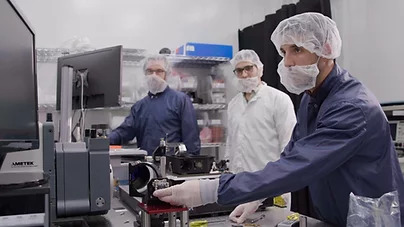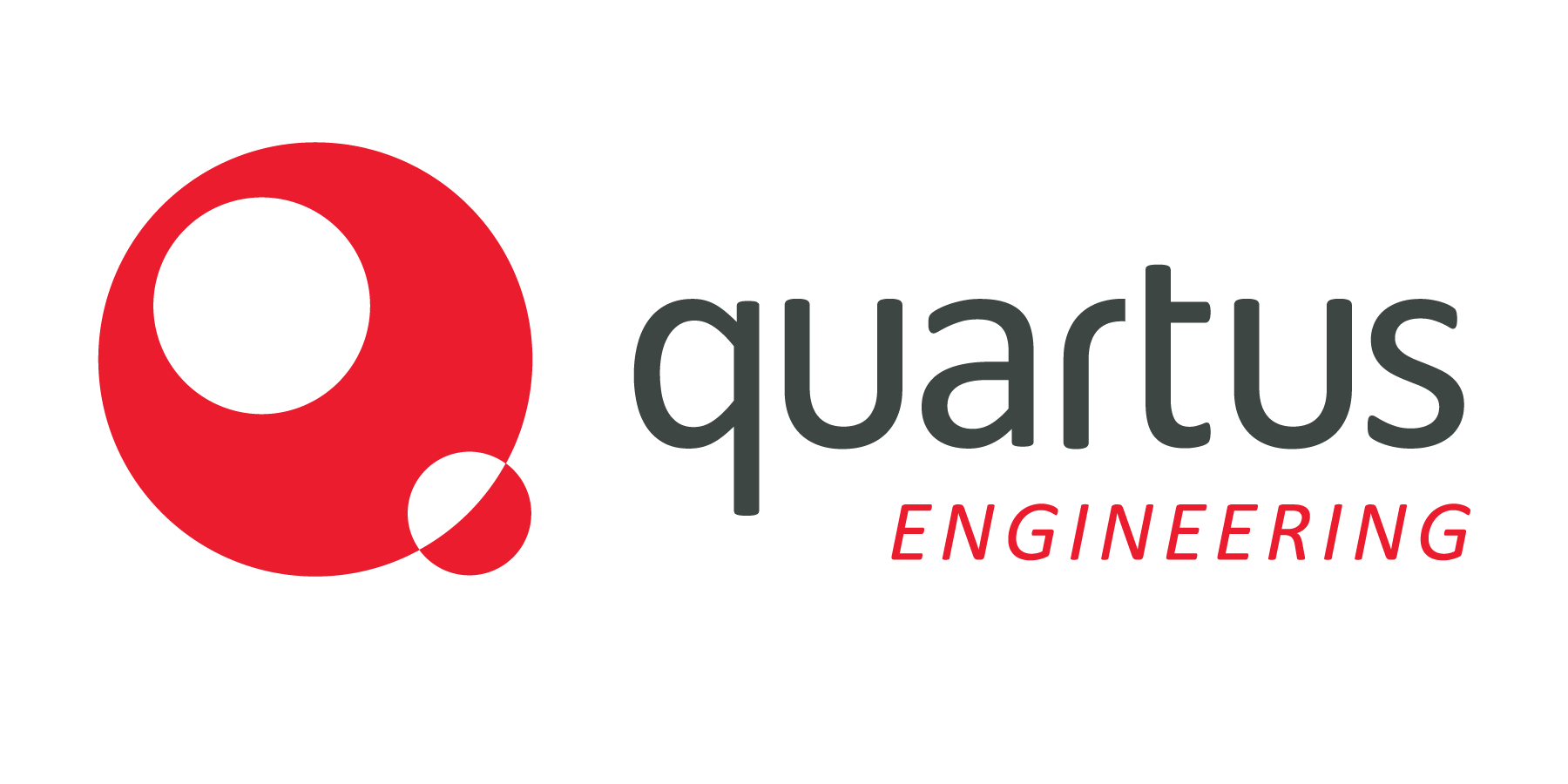Laser Communications.
Quartus has designed and built ground and space-based laser communication terminals, including: gimble mechanics for tracking and pointing; atmospheric modeling and implementation of fast steering mirrors and adaptive optics; telescopes; and optical heads.
CAPABILITIES
GROUND AND SPACE TERMINALS
Complete Station Development
- Telescopes, uplink & downlink channels
- Mount model, controls, and automation
- Adaptive optic solutions
LEO Optical Head Development
- Optical and opto-mechanics
- Beam expansion telescopes
- Space rated athermalized fiber collimator
- Assembly, integration, and test
Link Budget
- Pointing requirements
- WFE requirements
- Jitter requirements
- Impacts from atmosphere
Space Mechanisms Design
- Coarse pointing assemblies
- Launch / lock mechanisms
- Custom gimbal designs


section of the atmosphere used
to model atmospheric transmission

profile propagating from the satellite to
ground receiver through atmosphere

the focal plane array over time
CASE STUDY
Atmospheric Propagation ModelingQuartus has delivered and commissioned a complete ground terminal and low earth orbit optical head for free space laser communication.
Quartus was heavily involved in requirements definition and systems engineering, including the optical link budget.
In order to determine if atmospheric effects could be sufficiently corrected by incorporated adaptive optics, Quartus performed atmospheric modeling using internally developed wave propagation tools, MODTRAN, and HELEEOS.
